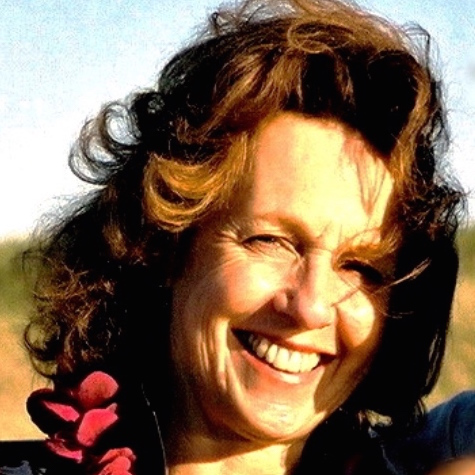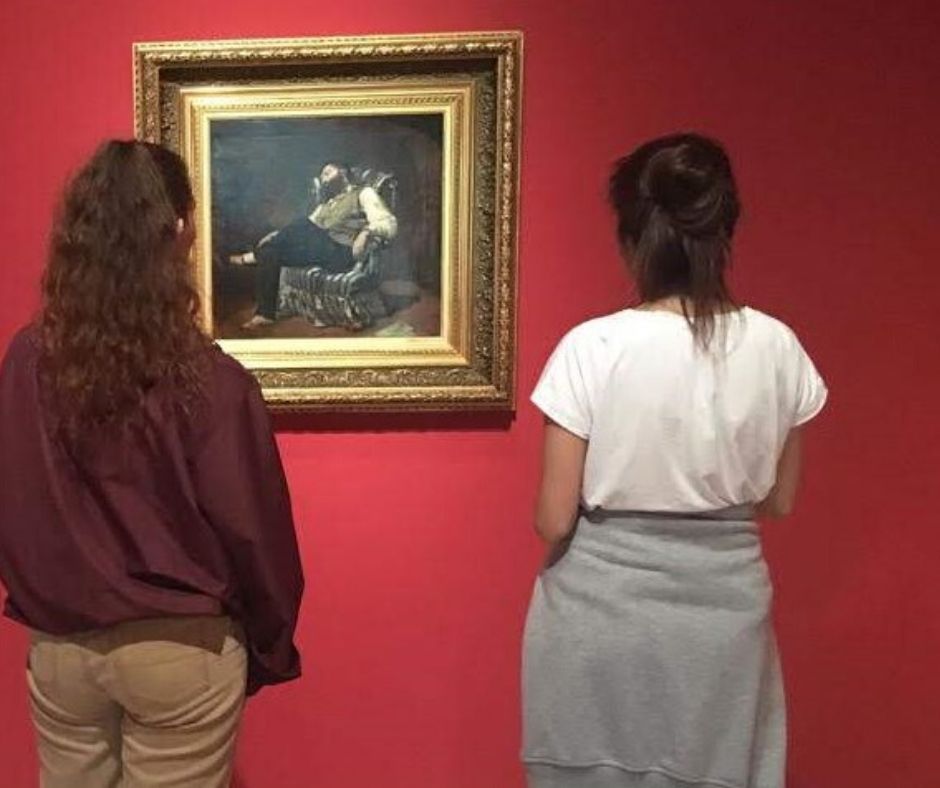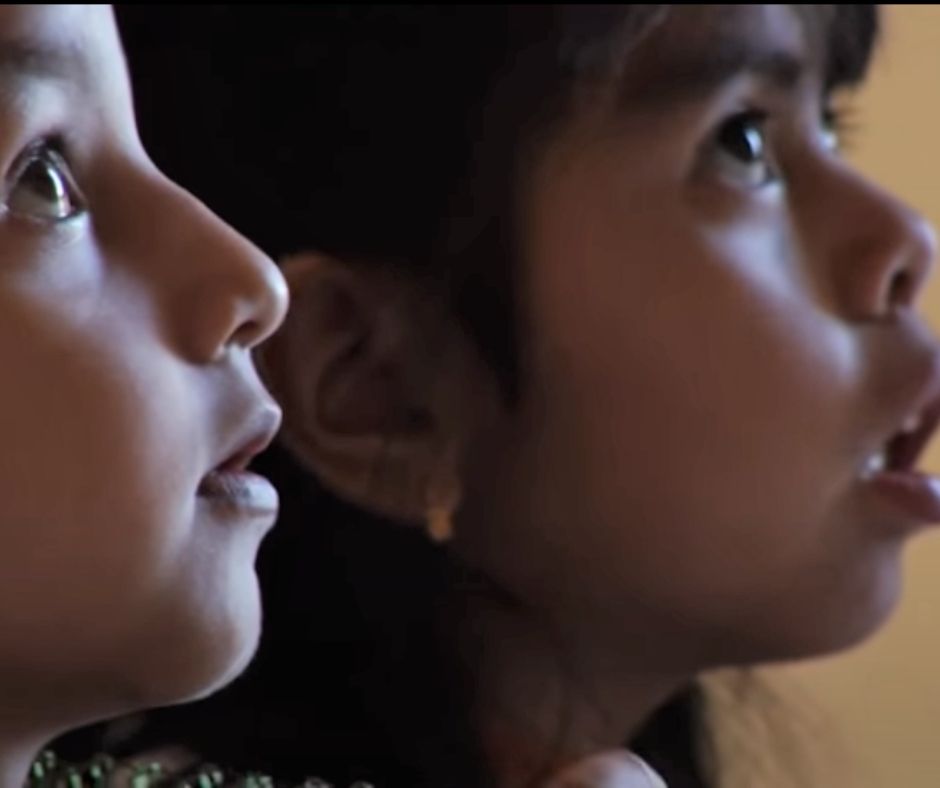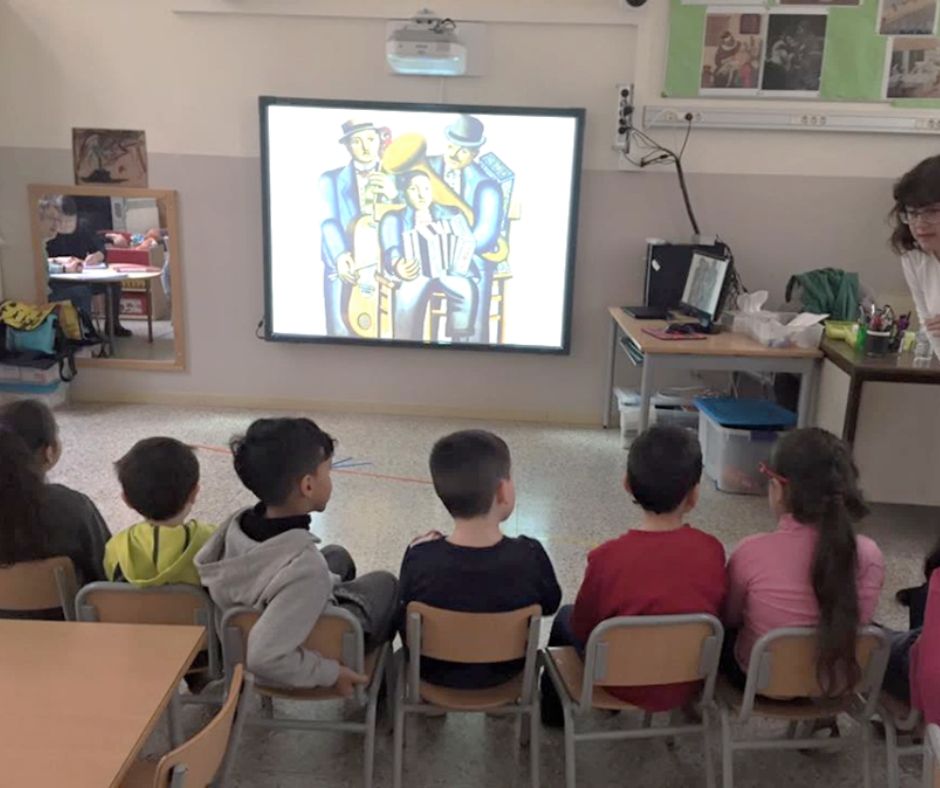Esther Fuertes
In times of confinement and social distancing we give even more value to methodologies such as Visual Thinking Strategies (VTS) that have helped make museums a place to dialogue, to share emotions, and to be with others.
The VTS are part of the mediation actions with our visitors carried out by the museum’s educational team. This methodology is also an important commitment within the training programme that we offer to teachers.
Why? What new things do they contribute almost thirty years after their creation?
How and why did the VTS emerge?
The Visual Thinking Strategies (VTS) methodology was born from the collaboration between the person in charge of the MOMA Department of Education, Philip Yenawine, and the cognitive psychologist Abigail Housen from the University of the Harvard Graduate School of Education.
Yenawine explains in one of his books how in 1987, despite having a positive evaluation of its programmes by users, the board of directors of the MOMA asked him to investigate whether visitors were really learning at the museum.
Abigail Housen was in charge of carrying out this study. Her research showed that visitors retained almost nothing of what they had tried to teach them in the rooms, even just after the experience had taken place. Imagine the disappointment and at the same time the shock that this represented for Yenawine and his team.

Abigail Housen 
Philipe Yenawine
Abigail Housen had started her research in the nineteen seventies. By means of non-directive interviews with more than 4,000 people, she had tried to understand how our thinking works when we process what we see in a work of art. Identifying a set of patterns allowed her to establish categories or stages that describe the different types of experiences we have when we look at works of art. Housen focused not on what people knew about art but on how they made use of what they knew. She found that people unfamiliar with art use their life experiences to make sense of what they are seeing. Experts also do the same, but they add other forms of thinking, a wide variety of specific strategies, concepts, and information often acquired through effort and over a sustained period of time.
Housen’s studies revealed that most museum visitors are in the first two stages, they are “beginners” in relation to looking at art. Despite the fact that they have been able to be in contact with art throughout their lives, they have spent very little time looking in depth at works of art reflecting on what they are seeing.
Taking this into account, Yenawine and Housen realised that academic approaches related to memorising information and acquiring analytical skills, conceptualisations, and artistic classifications that characterised many of the museum’s educational practices were not the most appropriate in these beginner stages. Despite being apparently well valued by users, these strategies were difficult to be internalised and reused. It is true that this study is a few years old but I think it is perfectly current and valid today and transferable to the current context. Despite living in the age of the image, artistic and visual education of the citizens continues to not have the relevance it deserves. We still have a lot to do at school and in the museum to improve the ability to look, the critical spirit, the autonomy and the enjoyment of people in front of art and images in general.
Children and youth in the museum exercising the pleasure of looking and curiosity. Photos Marta Mérida
If, as this study revealed, most people who visit us are at the stage of “learning to look” in relation to art, what they need is not that we overwhelm them with facts, dates and other information, however interesting all this may be. If we want to be useful to our visitors we should create comfortable spaces to exercise and share the fact of looking at art without prejudice, facilitating a personal connection with the works and arousing the curiosity to find out more. It is at this point that all kinds of information will make sense and we will really contribute to building learning.
Based on the study conducted by the MOMA, Yenawine and his team with the collaboration of Housen began working on a series of strategies that would allow educators to activate among the visitors their visual skills so as to: observe, interpret what they see, questioning, reflecting on, and considering other possible meanings, etc. From here, the methodology emerged, that we know as Visual Thinking Strategies and which the creators define as follows:
“VTS use art to learn to look, think and communicate by exercising personal expression and active listening. The improvement is increased by looking at works of art of increasing visual difficulty, answering open-ended questions and participating in debates between peers provided by an educator.”
VTS from the museum to the school and from the school to the museum
After experimenting with this methodology in the field of museums, Housen and Yenawine realised that if they wanted to really influence the visual education of citizenship, they needed to increase people’s familiarity with art. In this sense, the visit to the art museums was essential but totally insufficient. Incorporating this methodology into the school environment in a curricular and cross-cutting way was revealed as a priority.
A visual curriculum, a teacher training plan, and a research plan were implemented throughout the United States for more than 20 years from the VTS platform, first driven by the two creators of the methodology and nowadays constantly updated and with the incorporation of new assets.
Visual Thinking Strategies (VTS) in our context, a bit of history
My first contact with Visual Thinking Strategies (VTS) took place at the end of the 1990s when the then Arts Laboratory of La Fundació La Caixa, presented them in Barcelona within the programme Mira!.
With the help of this institution, a group of education professionals underwent an initial training with MOMA consultant Amelia Arenas. A pilot group implemented this methodology in some schools in the city. In this group of teachers was Montserrat Morales, then a teacher of Visual and Plastic Arts at the Garbí school. Despite obtaining an evaluation and positive results, in 2002 the Mira! programme came to an end. This did not stop Montserrat, who had experienced the potential of this methodology in the classroom, from deciding to continue her training in the USA.
The educator and expert in VTS Montserrat Morales in a training space with teachers of education and of adults
In 2013 on the occasion of the Tàndem project with the Escola Miquel Bleach I had the opportunity to take an in-depth look at VTS.
This school, now transformed into the ARTS School Institute, was a primary school in our district with 95% immigrant families and a history of stigmatization in the neighbourhood. Difficulties in communicating in a common language, low self-esteem, lack of cohesion, etc., we wanted the teachers and students to experience the museum and the encounter with art in a meaningful way. VTS was the tool we activated to embrace diversity and include everyone. Montserrat Morales’ expertise in this methodology was decisive in incorporating her as a collaborator and trainer in the project. Her mastery has been fundamental to me and to the museum’s educational team, from here we want to pass on our recognition to her, for her teaching work and our deepest gratitude.
The experience we had when implementing the VTS at the Tandem School created a major challenge for us. It was very inspiring and definitely influenced the museum’s public programmes that have incorporated this methodology as a useful and especially necessary mediation tool in both the museum and the school.
If you want to know what was so revealing to us, don’t miss the next post!!
Related links
Overview of Aesthetic Development
Visual Thinking Strategies, looking, thinking and communicating through art
Not all the spoons are the same
We take care of mental health in the Museu d’Art de Cerdanyola: Workshop on artistic therapy
Departament d'Activitats i Eduacació













